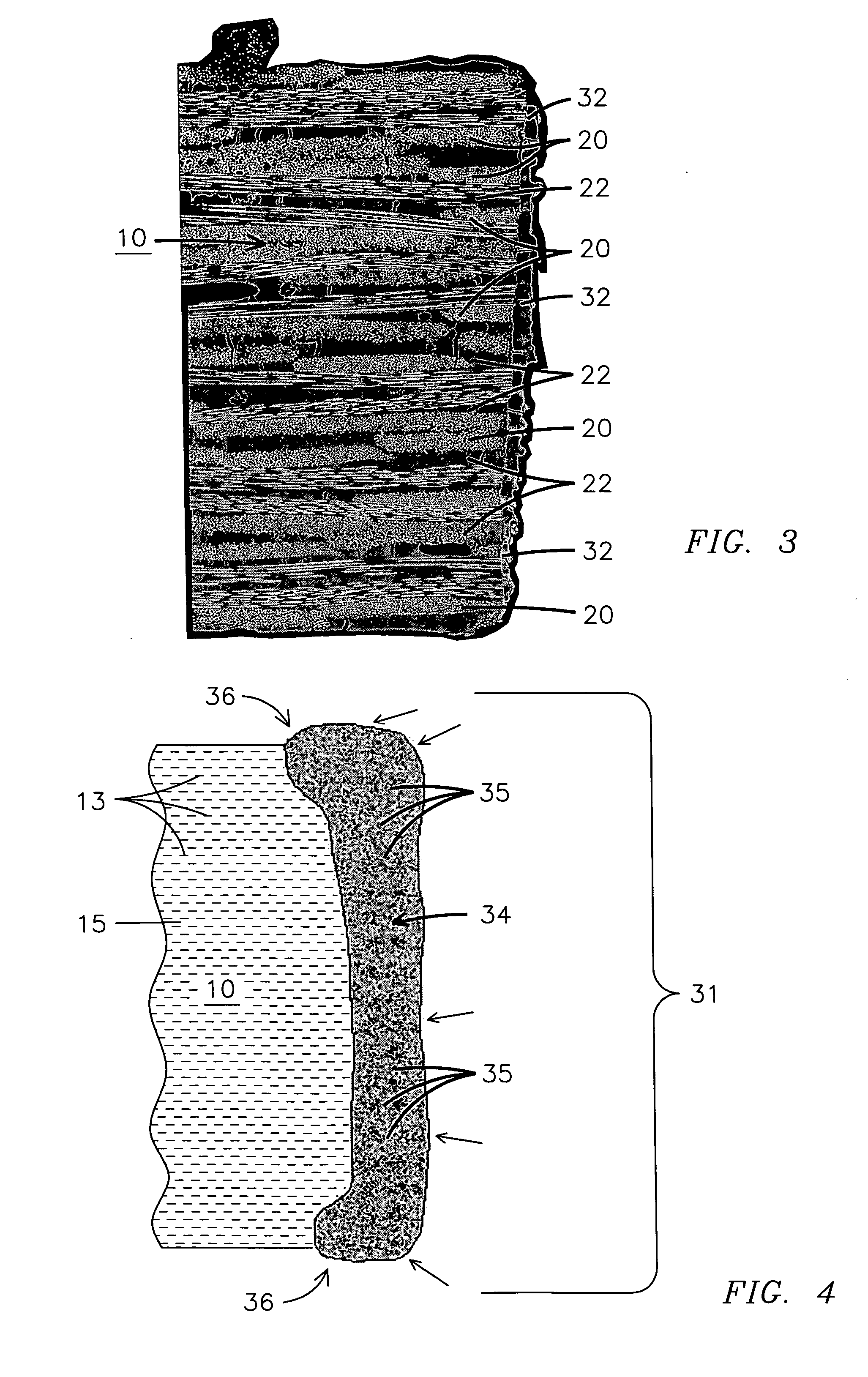Method of sealing a free edge of a composite material
a free edge and composite material technology, applied in the field of materials technology, can solve the problems of easy fracture of tensile stress, high degree of brittleness of ceramic materials, and high degree of brittleness, and achieve the failure of not only the cmc material but also a component formed from the cmc material
- Summary
- Abstract
- Description
- Claims
- Application Information
AI Technical Summary
Problems solved by technology
Method used
Image
Examples
Embodiment Construction
[0010]FIG. 1 illustrates a partial cross-sectional view of a ceramic matrix composite (CMC) material 10 having an adhesive 12 and a protective coating 14 deposited thereon. An exemplary CMC material 10 may have a plurality of layers of ceramic fibers 13 disposed with a ceramic matrix material 15. CMC material 10 may be used to cover or form various components as recognized by those skilled in the art. Another exemplary CMC material 10, shown in FIG. 2, may have a plurality of fabric laminate layers 20 interposed among a plurality of matrix material layers 22 to form a 2-dimensional composite layer CMC material 10. Layers 20 may be woven or wound so that fibers are in two directions and essentially in one plane. For typical 2-dimensional fiber structures, the two principle fiber directions are typically, but not necessarily, orthogonal as appreciated by those skilled in the art.
[0011] Laminate layers 20 may be, for example, woven fabric such as oxide based ceramic fibers selected fr...
PUM
| Property | Measurement | Unit |
|---|---|---|
| Temperature | aaaaa | aaaaa |
| Thickness | aaaaa | aaaaa |
| Force | aaaaa | aaaaa |
Abstract
Description
Claims
Application Information
 Login to View More
Login to View More - R&D
- Intellectual Property
- Life Sciences
- Materials
- Tech Scout
- Unparalleled Data Quality
- Higher Quality Content
- 60% Fewer Hallucinations
Browse by: Latest US Patents, China's latest patents, Technical Efficacy Thesaurus, Application Domain, Technology Topic, Popular Technical Reports.
© 2025 PatSnap. All rights reserved.Legal|Privacy policy|Modern Slavery Act Transparency Statement|Sitemap|About US| Contact US: help@patsnap.com


